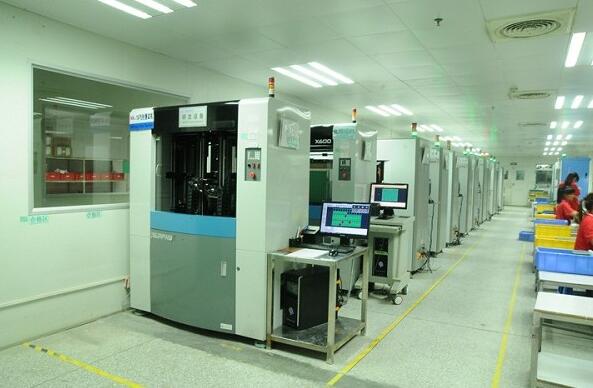The packaging density of multilayer PCB board increases rapidly. Therefore, even for low density, the general number of multilayer PCB board, automatic detection is essential and economical. In complex multilayer PCB board detection, two standard methods are the needle-bed and double-probe or flying-needle tests.
1. Needle Bed Test Method
A spring-loaded probe connects this method to each detection point on a multilayer PCB board. Springs place a pressure of 100 - 200g on each search to ensure good contact at each end, and these probes are arranged together called "needle beds". Under the control of the detection software, the detection points and signals can be programmed. Figure 14-3 is a typical pin-bed tester structure, and the tester can get the information of all the test points. Only probes for the test points that need to be tested are installed. Although needle-bed testing may be used on both sides of a multilayer PCB board simultaneously, when designing a multilayer PCB board, all points should be made on the welded side of the multilayer PCB board. Needle-bed testers are expensive and difficult to maintain. The needles select different arrays of probes according to their specific application.
A primary generic raster processor consists of a drilled plate with 100, 75, or 50 mil pin center spacing. The pin acts as a probe and makes direct mechanical connections using electrical connectors or nodes on a multilayer PCB board. If the bonding pads on the multilayer PCB board match the test raster, the polyvinegar film punched according to the specifications will be placed between the raster and the multilayer PCB board to facilitate the design of specific detections. Continuity detection is achieved by accessing the endpoint of the grid, which has been defined as the X-Y coordinate of the pad. Since each network on a multilayer PCB board is continuously detected. This completes an independent detection. However, the proximity of the probe limits the effectiveness of the needle-bed test.

Flying Test
2. Dual Probe or Flying Test
The flight needle tester does not depend on the pin pattern mounted on the fixture or bracket. Based on this system, two or more probes are mounted on a small free-moving magnetic head in the X-Y plane, and the test point is made by CADI
Gerber data is directly controlled. The dual probes can move within 4 mil of each other. Probes can move independently and do not really limit how close they are to each other. The tester with two movable arms is based on the measurement of capacitance. Press the multilayer PCB board tightly onto the insulating layer of a metal plate as another metal plate of the capacitor. If there is a short circuit between the lines, the capacitance will be larger than at a certain point. If there is a - break, the capacitance will be reduced.
Testing speed is an important criterion for selecting a tester. The needle-bed tester can accurately test thousands of test points at a time, whereas the flying-needle tester can only test two or four test points at a time. In addition, a needle-bed tester may only take 20 - 305 for one-sided testing, depending on the complexity of the board, while a flying-needle tester may take Ih or more to complete the same evaluation. Shipley (1991) explains that even if manufacturers of high-yield printed multilayer PCB boards think the mobile flying needle testing technology is slow, this method is a good choice for manufacturers of complex multilayer PCB boards with lower production.
For bare panel testing, there is a special testing instrument (Lea, 1990). A more cost-effective method is to use a generic instrument, which is initially more expensive than a dedicated one, but its initial high cost will be offset by a reduction in individual configuration costs. For general purpose rasters, the standard raster for panel and surface mounting devices with pin components is 2.5mm. The test pad should be greater than or equal to 1.3mm at this time. For Imm rasters, the test pad is designed to be greater than 0.7mm. If the raster is small, the test pin is small, crisp, and easily damaged. Therefore, a raster larger than 2.5mm is preferred. Crum (1994 b) clarifies that the combination of a universal tester (standard raster tester) and a flying tester can make the detection of high-density multilayer PCB boards accurate and economical. Another method he suggests is the use of a conductive rubber tester, which can be used to detect points that deviate from the raster. However, different pad heights with hot air leveling will hinder the connection of test points.
There are usually three levels of detection:
1) Bare panel detection;
2) On-line detection;
3) Function detection.
The universal type of tester can be used to detect a class of style and variety of multilayer PCB boards, as well as for the detection of special applications.